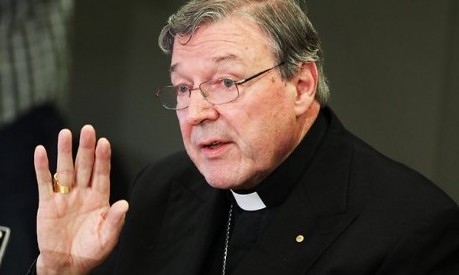The presbytery of St. Alipius is a redbrick gothic bungalow built when gold money was still washing through Ballarat. It sits in a Catholic compound of brick and granite schools and convents where the road from Melbourne reaches town. White crosses stand on the gables of the house as if to ward off evil from all points of the compass. The plan, if that was indeed the plan, failed spectacularly.
When young Father George Pell moved his things into the presbytery in 1973, that corner of Ballarat was one of the most dangerous places in Australia for children. Already living in the presbytery was Father Gerald Ridsdale, chaplain at the little primary school standing on the other side of the church. He was raping the children. All four members of the staff, all Christian Brothers, were abusing the children in the school. They would not be exposed for twenty years. George Pell, back from his studies in Rome and Oxford, noticed nothing.
Ballarat was his town. His parents owned the Royal Oak. George Sr. was huge, down-to-earth and Protestant. Lil was fierce, gentle and made all the decisions that mattered in her son’s life. She was devoted to the Catholic Church. A portrait of old Daniel Mannix, archbishop of Melbourne since 1917, hung in her kitchen. Her son would one day write: “She was a woman of great strength and faith: a faith I suspect that was very Irish, and probably in particular a faith typical of the west of Ireland in its certainties and in its impatience with theological subtleties.” The pub was working-class but not rough. George Sr. ran an SP bookmaking operation out of the front bar and hid the books under his children’s beds. He enforced the rules. Children brought up in a pub learn to tolerate all sorts and to value rules. Once they were teenagers, young George and his sister Margaret helped out in the bar in the school holidays but their mother was preparing her children for a life that would take them a long way from the Royal Oak.
Though raised Catholic from birth – tribal Catholic in a town where priests, nuns and brothers ruled the Catholic roost – Lil’s big, confident boy had a conversion in adolescence that determined the course of his spiritual life and the trajectory of his career. At the age of fourteen he fell under the spell of B.A. Santamaria:
“As a teenager, probably in 1955, I first heard him talk to a packed cathedral hall in Ballarat on the menace of communism. He set out to identify the mighty forces under the swirl of events. He often appealed to history. We felt we too belonged to the forces of good fighting the new faces of evil, as saints and heroes had done for thousands of years. He placed us in a grand tradition of worthy struggle and combat, where we felt we could do our bit. Some of us never completely lost this conviction.” Continue reading
Sources
